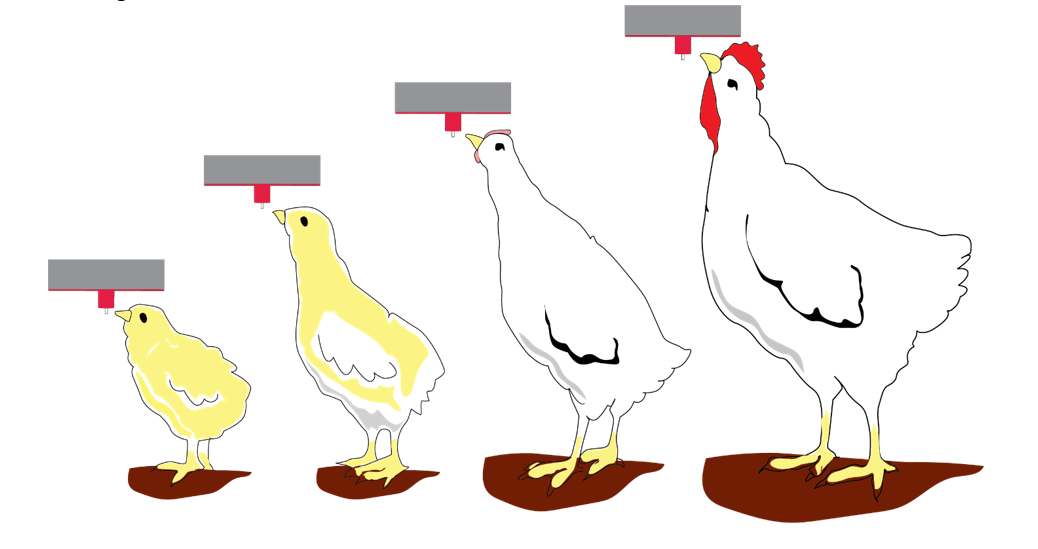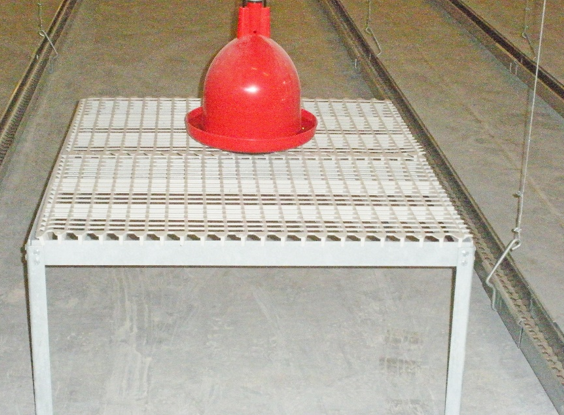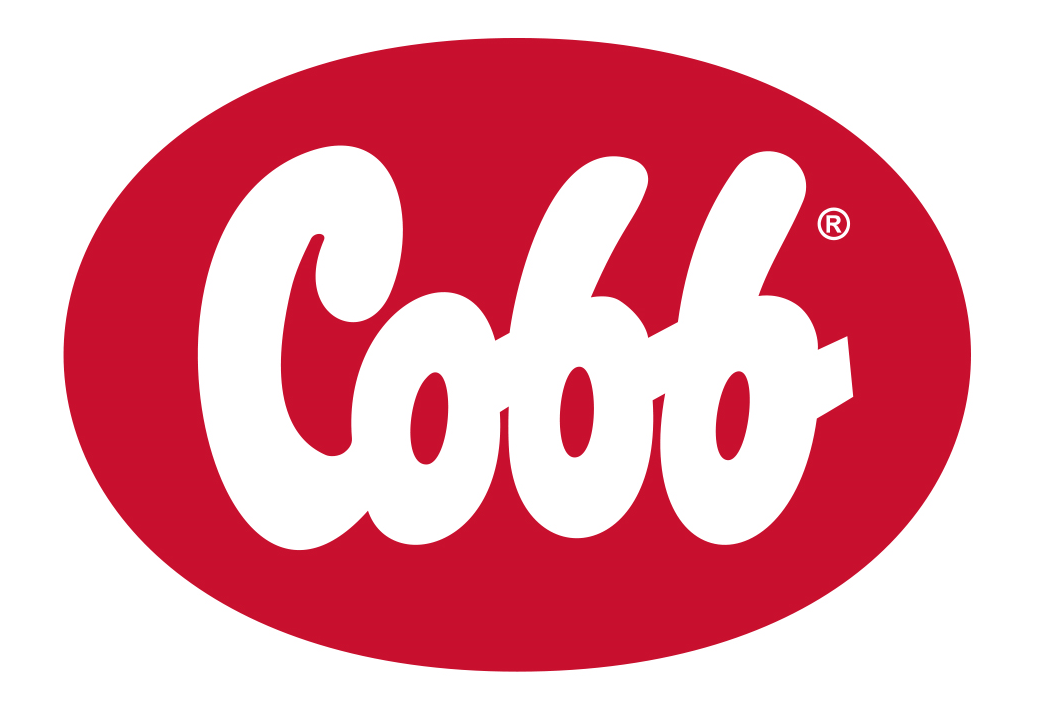



Water management for parent stock broiler breeders
Top tips for water systems, suppply and bird training.Feed intake in broiler breeders is controlled and therefore overcompensation of water must be prevented because it can have many negative consequences. On the other hand, water must be provided sufficiently and timely for optimal welfare and production. In this article, important aspects regarding water management for parent stock broiler breeders are described.
Water systems for rearing and production
Different system can be used to provide water to broiler breeders. Bell, nipple, and cup drinkers have their own characteristics. Bell and cup drinkers use a natural way of drinking where the bird must lift its neck to let the water flow from the mouth down the esophagus by gravity.
Bell Drinkers

A bell drinker has an open water system giving the birds easy access. It is easily checked visually to determine if water is available in every drinker. The challenge is that water quality management is more complicated and labor intensive (cleaning). It is important to have the correct water level in the drinker for optimal drinker comfort. The bell drinker water level should be 0.5 cm from the lip of the drinker at placement and reduced gradually after seven days to a depth of 1.25 cm (or thumbnail depth). Another important point is the height of the system. The bell drinker should be suspended at a height to ensure that the lip of the drinker is equal to the height of the birds’ back when it is standing normally.
Cup drinker
A cup drinker is an open water system. It has a high-water capacity but due to a smaller surface area, the birds have some restricted access and less space to move around the system compared to bell drinkers. Drinker water vaccination is more difficult with a drink cup system because the cups don’t become completely empty.
As with the bell drinker, the height of the cup drinker should be suspended to ensure that the lip of the drinker is equal to the height of the birds’ back when it is standing normally. The rule of thumb is to have a maximum water level of 2 cm to prevent water spillage.
Nipple drinkers

The nipple drinker is a closed water system. There are a variety of nipple drinkers on the market developed using different strategies for obtaining water. Some types require the bird to peck the nipple, others hold the triggering pin up and drink the water as it flows into their beak while others incorporate drip cups.
There are different types of nipples; 180 and 360° nipples. Both are activated when the pin is pushed up, but the 360-degree nipple also has a side action. It is easier for birds to drink using the 360° which is important in the 1st week and when birds are not beak conditioned. The nipples should be spaced at 20 cm centers to ensure enough nipples when using only 2 nipple lines in a 12 to 14 m wide production house
Table 1: Different characteristics of types of water equipment.
Type of drinker |
|||
Bell |
Nipple |
Cup |
|
Density |
75 birds per drinker |
8 to 10 birds per nipple |
25 birds per cup |
Easy access |
++++ |
++ |
+++ |
Clean and fresh water |
+ |
++++ |
++ |
Water spillage |
+ |
+++ |
++ |
Labor cost |
++ |
++++ |
+++ |
++++ - Excellent
+++ - Very good
++ - Good
+ - Average
Brooding
The first hours after placement, the goal is to achieve fast water intake to prevent dehydration, obtain high uniformity, and good development of the birds which contributes to high production performance. During the first days, the one-day-old chick will require some extra attention to stimulate water intake regardless of the water system.
Regarding water management check the following points:
- Ensure that all drinkers are working correctly.
- Provide fresh and clean water, the temperature should be below 25°C (the ideal temperature is 10 to 14°C).
- Flush the water system 3 times a day.
- Supplementary drinkers can be used a rate of 2 per 100 chicks until 7 days. They should never be placed directly beneath the brooders as this will heat the water. Open trays are not recommended since chicks may immerse themselves in these and/or contaminate water with litter and feed which causes poor water quality.
- Conduct a crop fill assessment by checking at least 100 birds in each house. After 24 hours, 95% of all birds should have feed and water in their crops and crops should be pliable.
- Birds should never have to travel more than 3 meters to have access to water.
- During the first 48 hours, place the height of the nipple system at bird eye level so they can see the water drop on the tip of the nipple. From 2 days onward, raise the nipple lines so the chicks are drinking at a 45° angle. The bird’s feet should always remain flat on the floor when they drink (Figure 2).
Water supply by controlled feed intake in rearing
Feed is controlled in rearing, especially between 4 and 16 weeks. Water must be supplied the correct way to prevent wet litter, footpad dermatitis and flock uniformity issues. When feed is controlled, birds tend to drink more as required for optimal digestion and development. Water wastage may occur because it is entertaining to the birds. The general rule is to supply water for as long as possible each day provided the litter quality and digestibility is good. However, in some countries, water restriction is not allowed by local regulations.
The water system must be in good working condition with no leaking nipples and good, well-adjusted water flow rates. Water flow rates that are too high in nipples or high-water levels in bell drinkers and cups leads to more water spillage.
Incorrect water supply can lead to:
- Poor uniformity
- Wet litter
- Dusty houses
- Health problems
- Nervous behavior
- Poor production performance
During feeding, if most birds go to the water first, this can indicate that they did not drink enough the day before. Another good tool to assess water intake is to check the crop fill in the afternoon. Crops should be soft and pliable. Install a water meter so the daily water intake can be monitored. It is also highly recommended to switch on both water and feed at the same time. Cobb doesn’t recommend supplying water on fixed water to feed ratios because the diet, environment, climate, or diseases could have a big impact on this ratio. Among flocks, water to feed ratios range from 1.5: 1 to 2.3: 1 in rearing. The water to feed ratio for a flock should be similar in rearing from 4 to 20 weeks but also during the production period in environmentally controlled houses. When there is a significant shift in the water to feed ratio, it is a signal to the flock manager that something has happened with the water equipment or flock status. Immediate action is required.
Training birds for the production house

Many houses employ a community nest system and install the drinking system on the slats while in production. It is highly recommended to train the birds in rearing using slat tables with drinkers situated above to simulate the laying house setup which supports the transition to the production. Start using the slat tables with drinker lines from 6 weeks onwards, figure 3.
Transfer from rearing to production
It is important that within 24 hours after transfer, all birds eat and drink, so they don’t lose their condition. In houses with community nests, the water equipment is often supplied on the slats close to the nest. Recommended distance from the nest to the water line is 60 to 70 cm. The following points will help birds access water as soon as possible after transfer.
- Unload the birds onto the slats
- Switch the water on before unloading
- Walk through the house several times per day to move the birds close to the drinkers
- Check the crops in the afternoon to confirm that the birds are consuming water
- Place birds that show signs of dehydration on the slats, close to the drinkers
- Place ramps so birds have easier access to the slats
- Prevent condensation and water leakage spots
Symptoms of birds with dehydration are:
- Hard crops or no crop fill at all
- Dirty beaks due to pecking in the droppings
- Cold legs and visible veins on the legs
Production
An average sized egg holds 74% water. Therefore, to achieve good egg production a good water management program is essential.
Water management, and especially the water supply is a very important factor in the production house because after feeding almost all birds drink at the same time. Water should be distributed quickly throughout the house (3 to 4 minutes from the front to the back end of the house) so the birds can drink simultaneously. A water storage system can help supply enough water in a short time. If water cannot be supplied to all houses at the same time the houses should be given water at different times (for example 15-minute intervals between the houses). Nervous birds, unevenness in birds per drinker or wet necks indicate poor water distribution.
Do not give water on fixed water to feed ratios because the ratios will vary. Chickens normally drink between 1.8 to 2.0 times their feed intake daily at 21° C, in closed-house conditions. In open house conditions, water intake is between 2 and 2.5 times their feed intake, especially during production. It is important that there is a similar water to feed ratio within the flock when the circumstances are normal. With extreme temperatures, the water to feed ratio is normally higher.
Signals of water problems during production
- Birds go first to water instead of feed
- Birds are nervous
- Hard crops – difference in crop fill
- Neck feathers are wet
- Bad feather quality
- Skin damage
- Dusty houses or very wet litter
- Long feed cleanup time
- Poor peak production
- Differences in egg size (bad uniformity)
- A lot of small eggs
- High mortality
Water sanitation
Good sanitation should be done between the flocks. Even though water looks clean, it doesn’t mean that it is free of contaminants. Biofilms must be removed so no pathogens can survive in this protective film. There are different products available, most of them based on hydrogen peroxide, aldehydes or chlorine that are effective at removing biofilms. After sanitation always check the water quality.
Summary
Water is the most important nutrient for chickens. Therefore, the water supply should be fresh, clean, and uncontaminated. A good water management system will support good production performance. Ensure there is enough water space and that the water is distributed fast through the houses. Don’t give water on fixed water to feed ratio but always on time and use the water to feed ratio as information.









